- Savage Blog
- Building a Layering System For Cold Weather Hunts
Building a Layering System For Cold Weather Hunts
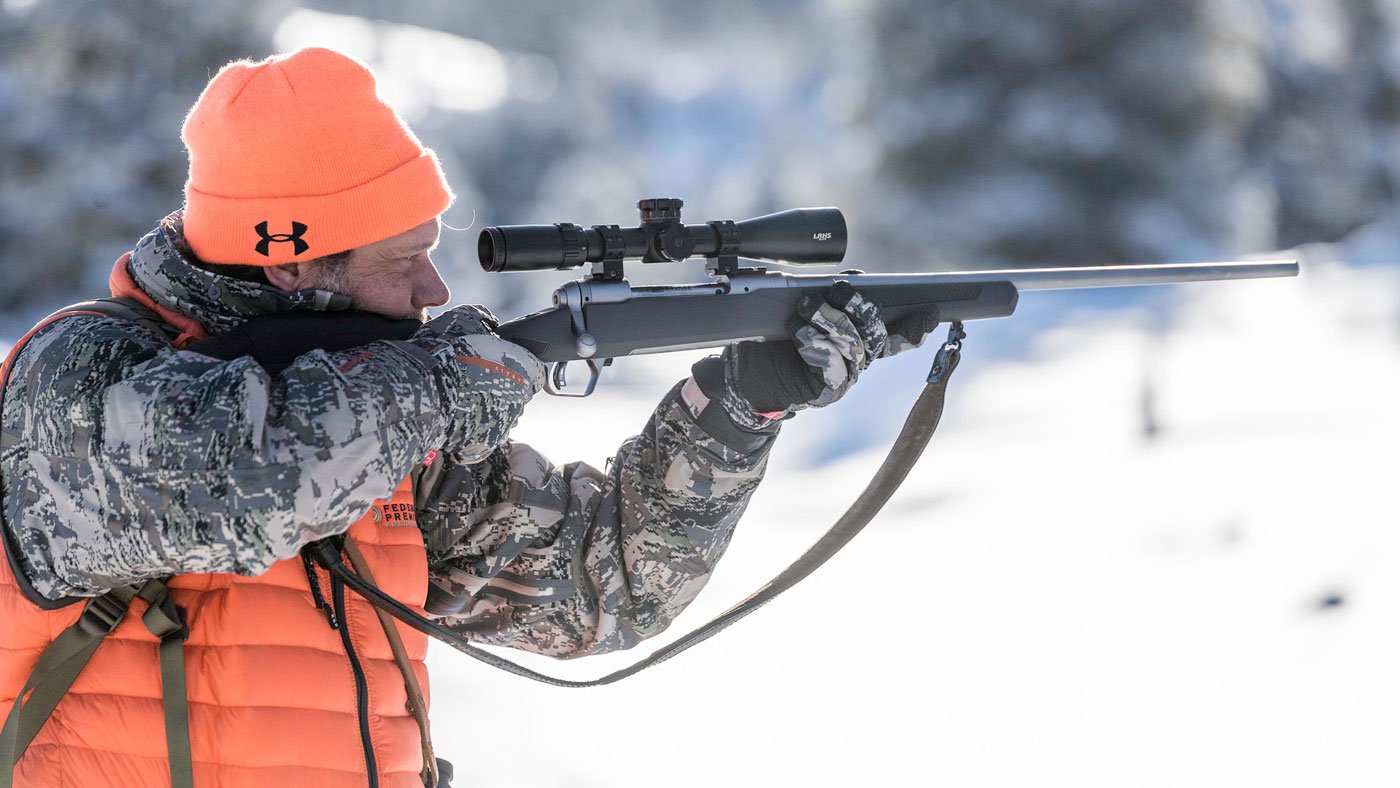
Late-season hunts can offer some of the most rewarding opportunities of the year. Whether you’re glassing open country for mule deer, sitting in a tree stand for whitetails, or hiking ridge lines in search of elk, late-season conditions often bring colder temperatures, unpredictable weather, and long sits waiting and glassing open country. Those who head into the field without a proper layering system quickly discover how cold, wind, and moisture can cut a hunt short. But hunters who build the right layers, ones that manage heat, moisture, and protection, can stay out longer, move more efficiently, and hunt more effectively.
A well-built layering system is essential for comfort, safety, and performance in cold weather. We'll break down each layer in detail, explain its purpose, and provide helpful tips on choosing the right materials for your hunting style and climate.
Why Layering Matters
Cold weather doesn’t just challenge your comfort; it impacts your decision-making, marksmanship, and stamina. Your hunt will take you through different levels of activity, from building heat walking ridges to sitting still and cooling off. A functional layering system adapts to these changing demands.
The right layering structure accomplishes three key goals:
Wicking Moisture – Sweating cools off your body, which works against you during the late season. Layers must pull moisture away from the body to help keep you warm.
Trapping Heat – Insulating layers help trap the heat that your body generates.
Blocking the Elements – Wind, rain, and snow can cut through some clothes and rob you of heat, making outer protection layers crucial.
Understanding how each layer works will help you build a system that’s tailored to your needs and performs flawlessly during late-season hunts. 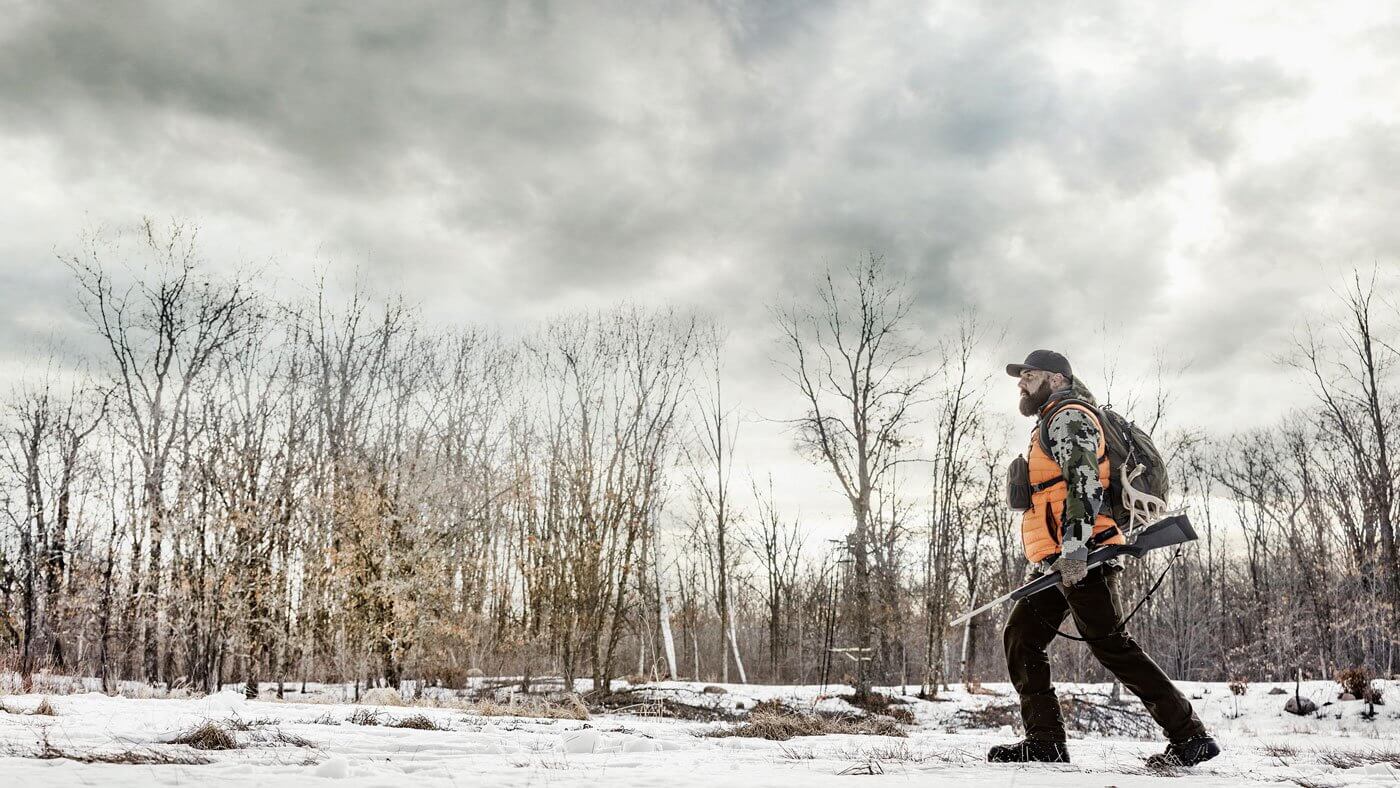
Layer 1: Base Layer
Your base layer is the foundation of your layering system, and arguably the most important piece. This is the first layer that touches your skin, meaning its job is to move moisture away from your body quickly and keep you dry. A dry base layer helps regulate your temperature and prevents you from getting too cold, which could lead to an early end to your hunt.
Why Moisture Management Matters
When you hike, climb, or drag a deer, your body generates sweat. If that moisture stays trapped against your skin, it rapidly cools and makes you colder than if you weren’t sweating in the first place. A good base layer prevents this by pulling moisture through the fabric and away from the body so it can evaporate.
Common Base Layer Materials
Choosing the right material is crucial:
Polyester
- Lightweight and breathable
- Good moisture-wicking ability
- Dries quickly
Fleece
- Warmer and slightly thicker
- Often used as a second base layer for frigid conditions
Merino Wool
- Excellent moisture-wicking
- Naturally antimicrobial (reduces odor)
- Warmer than polyester and regulates temperature extremely well
What to Avoid: Cotton
Cotton traps moisture, dries slowly, and can quickly lead to hypothermia in extreme cold or wet environments. Late-season hunts require performance fabrics, not every day wear.
A strong base layer keeps your body dry and sets the tone for a successful entire layering system.

Layer 2: Mid-Layer
The mid-layer continues the job of your base layer by helping move moisture away from your core, but it also helps provide some insulation. It plays a critical role in regulating warmth during hiking or slow movement.
Mid-Layer Purposes
- Adds moderate warmth
- Moves moisture outward from your base layer
- Provides flexibility to cool down or heat up with zippers or vents
Common Mid-Layer Options
¼ or ½ Zip Pullover
- Allows you to unzip and dump heat during high activity periods like hiking to a new spot
- When you reach your stand or glassing spot, you can zip up to help trap heat in
Hoodies
- Comfortable, versatile, and ideal for cool-but-not-freezing temperatures
- Fleece lined hoodies help provide extra warmth
Extra Base Layer
- Useful in extreme cold: doubling up adds warmth without adding bulk
Fleece Jacket
- Warm, but breathable
- Good for active cold-weather hunts
- Some jackets come with side zips that can be opened to dump heat while moving
Vest
- Traps heat around the core and keeps your arms unrestricted for better movement
- Keeping your core warm can help keep your outer extremities warmer without heavy layers.
Think of the mid-layer as your “active layer”. It’s best worn while hiking or when the temperature is steady but not yet frigid.
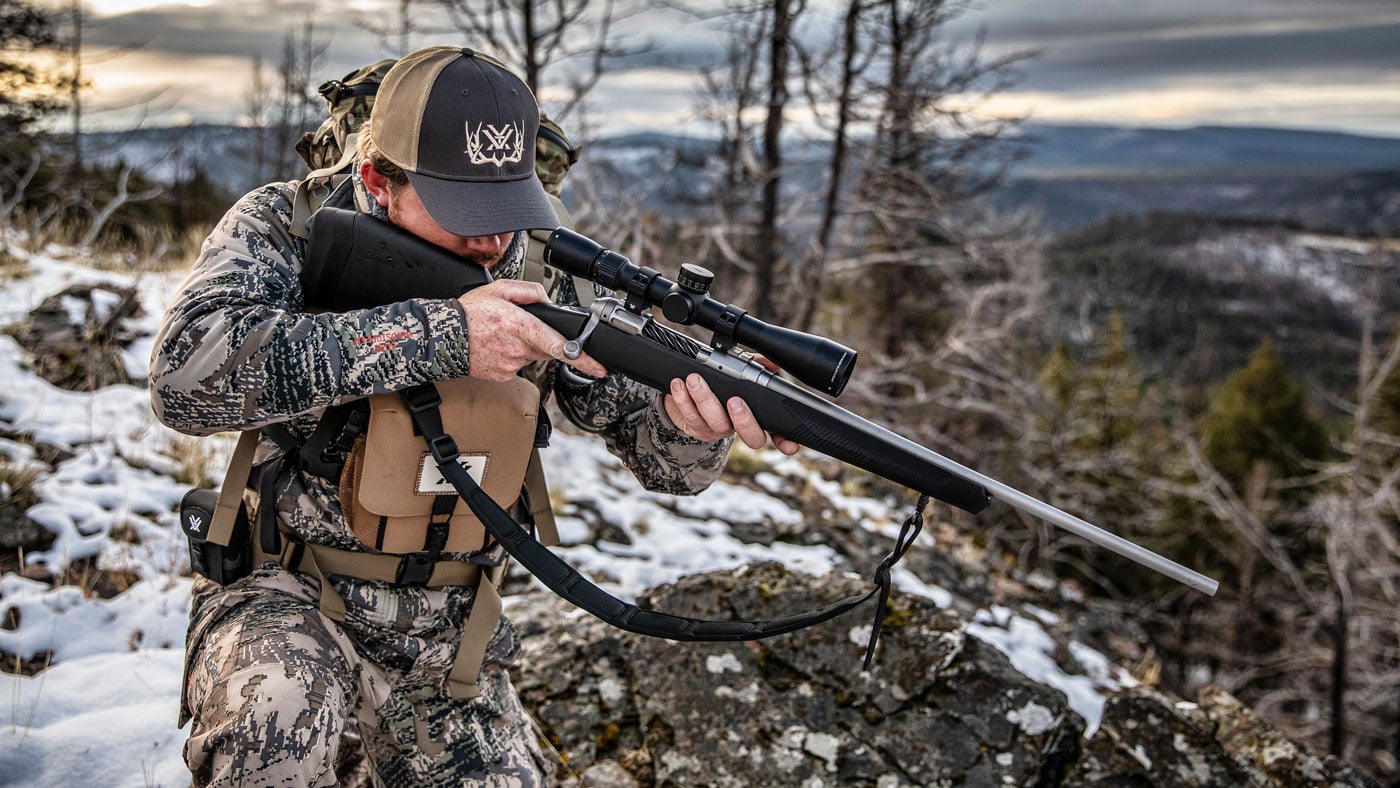
Layer 3: Insulating Layer
This is your main warmth provider in a layering system. The insulating layer traps body heat and creates a warm barrier between you and the cold outside air. It’s most effective when you’re stationary: glassing, sitting in a stand, or waiting in a blind.
When to Use the Insulating Layer
Wear insulation sparingly while moving, otherwise, you’ll sweat too much and end up getting cold fast. When you stop to rest, sit, or glass, pull your insulating layer out of your pack and put it on to preserve your body heat. One of the great benefits of many garments designed to be an insulating layer is that they pack up small, making carrying them easier and convenient.
Common Insulating Layer Types
Insulated Jackets
- Great balance of mobility and warmth
- Work well if you’re on a budget and need to consolidate layers.
Puffy Jackets (Synthetic or Down)
- Traps heat extremely well
- Lightweight and packable
- Goose down is the warmest, but it loses its insulating properties when wet. Some manufacturers will use DWR treated down to combat this.
- Synthetic down works well in damp environments but isn’t quite as packable or warm as goose down.
Puffy Pants
- Usually reserved for extremely cold hunts where your lower body stays still for long periods (tree stand hunting, ground blinds, glassing sessions)
Having a good insulating layer can make or break your hunt. If you’re cold and miserable, you won’t be sticking around to punch your tag. This makes your insulating layer critical for late season success.
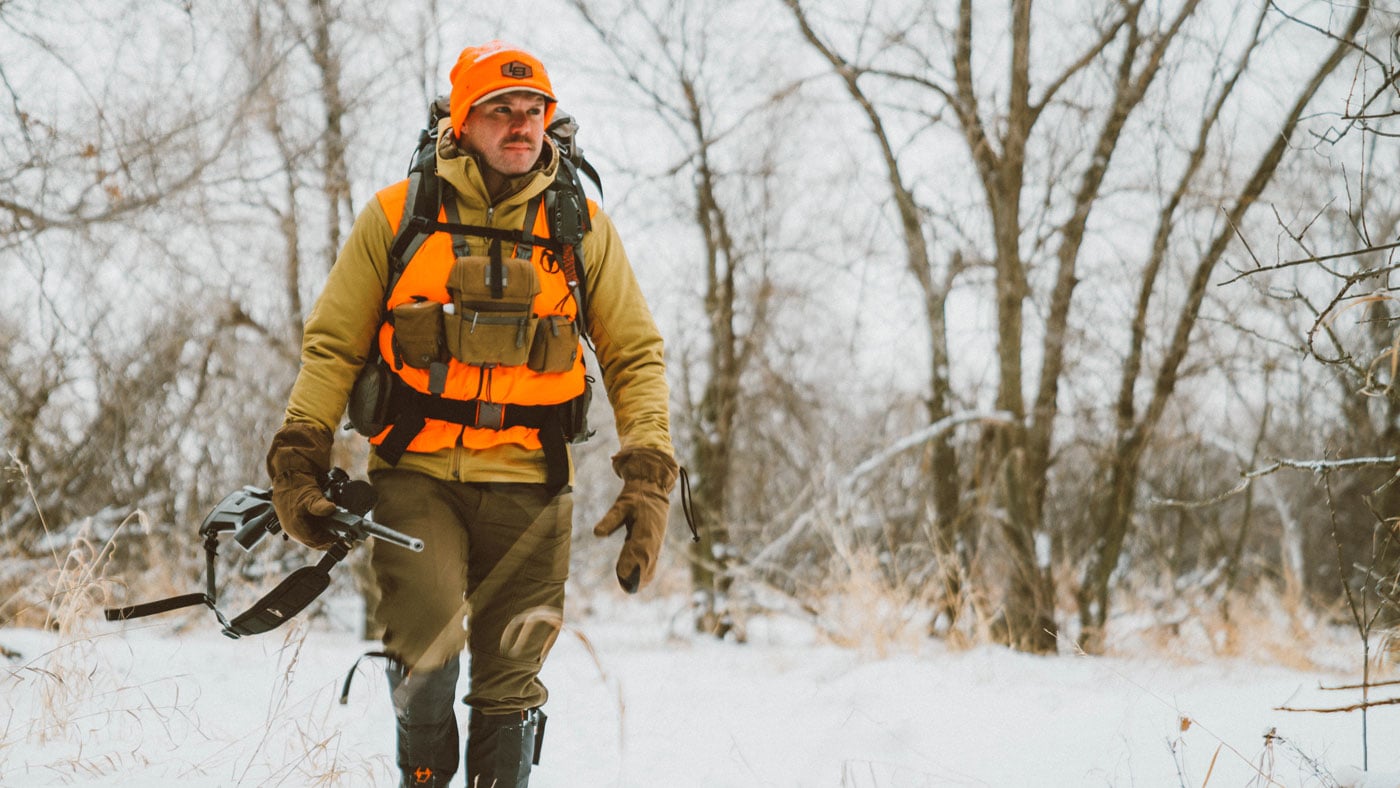
Layer 4: Outer Shell
The outer shell is your first line of defense against wind, snow, and light moisture. Wind can strip heat faster than cold air alone, and even a small amount of moisture can drastically reduce warmth.
What the Outer Shell Does
- Blocks wind to help keep you warmer
- Resists moisture
- Protects insulation from getting wet
- Adds abrasion resistance for moving through thick brush
- Most outer shells are treated with a DWR (durable water repellent) finish, helping shed light rain and snow.
Common Shell Options
Soft Shell Jackets
- Often built with quiet fabric for more stealth in the field
- Wind-resistant
- Light to moderate moisture protection
Soft Shell Pants or Bibs
- Adds warmth and wind resistance
- Ideal for cold but dry conditions
- For many late-season hunts, a soft shell combined with a strong insulating layer offers the perfect balance of protection and mobility.

Layer 5: Storm Layer
The storm layer is your heavy weather protection. It’s the final component of a well-rounded layering system. While often lightweight, it serves a critical role when conditions turn worse than expected.
Why Storm Layers Matter
Even the best outer shells struggle in sustained heavy rain or wet snow. A storm layer prevents moisture from soaking your insulation layers over time, which could quickly lead to dangerous heat loss.
Storm Layer Features
- Fully waterproof
- Lightweight
- Packable
- Designed to be worn over all other layers
- Ideal for all-day rain or snowy conditions
Unless you’re moving in heavy rain or snow, your storm layer is not meant to be worn while on the move. It’s typically best used while hunkered down glassing or waiting out inclement weather.
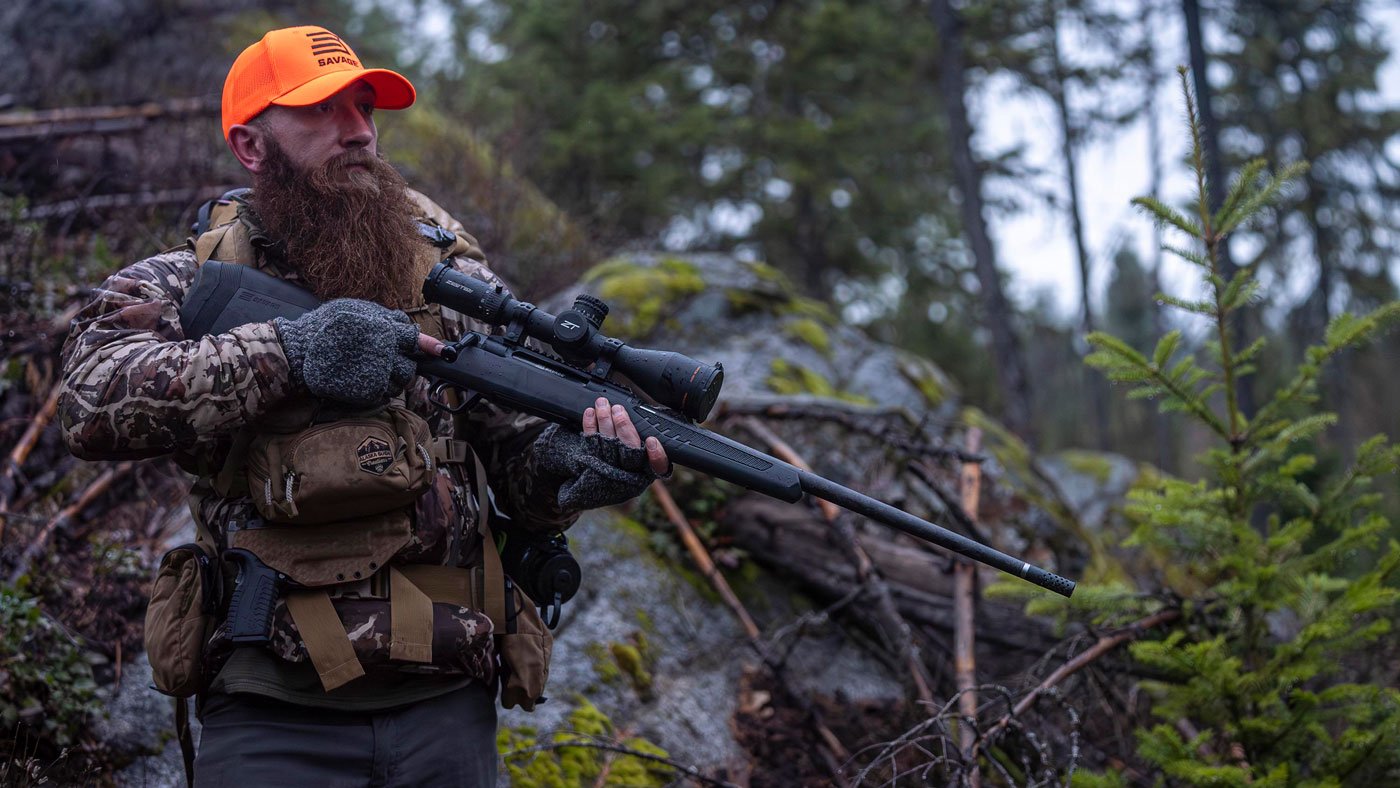
Putting It All Together: Building Your Layering System
A well-built layering system does little good if you don’t know how to properly use the layers. Here’s how hunters typically structure their clothing during cold-weather hunts:
While Hiking
- Base layer
- Mid-layer
- Exterior soft shell if there’s light rain, snow, or wind
While Stationary
- Base layer
- Mid-layer
- Insulating layer
- Outer shell
- Storm layer (if there’ sustained rain or snow)
Adapt for Conditions
Late-season hunts demand flexibility. Zip down mid-layers when climbing, shed insulation before heavy exertion, and add layers as soon as you stop to retain warmth. The aim is to avoid sweating while staying warm enough to remain comfortable and alert. Look for layers that have side zips and are designed to take on and off quickly to help make this process seamless in the field. 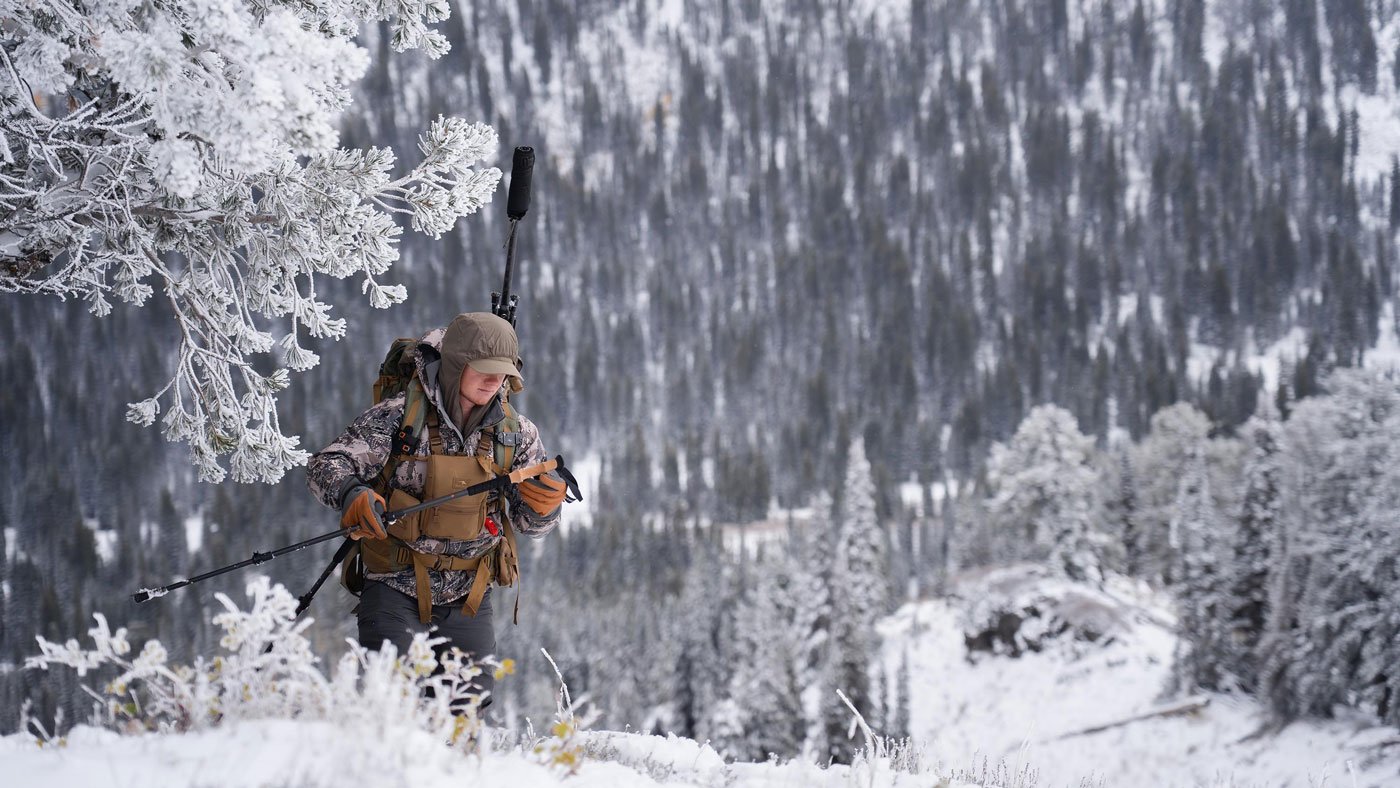
A proper layering system is one of the most important investments a hunter can make. It enhances comfort, safety, and performance by controlling moisture, regulating temperature, and protecting you from harsh elements. With the right combination of base layers, mid-layers, insulation, shells, and storm protection, hunters can extend their time in the field and increase their chances of filling a tag, no matter how brutal late-season weather becomes.
Cold-weather success is as much about preparation as it is endurance. Build a smart layering system, learn how to use it, and you’ll be ready for whatever the late-season hunt throws your way.

